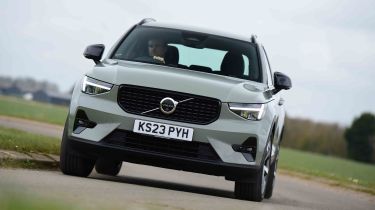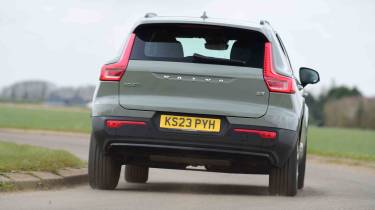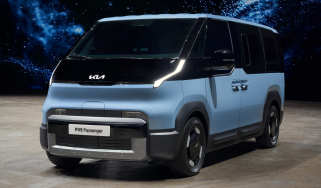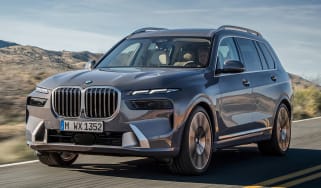Volvo XC40 - Engines, performance and drive
Engine options have reduced over time, while XC40 majors on comfort over sporty handling

The Volvo XC40 was the first model to use the firm’s Compact Modular Architecture (CMA) underpinnings. This features MacPherson strut front suspension and a multi-link rear axle, which is similar to what you will find under its German rivals. However, if you’re looking for dynamic sparkle from a compact SUV, you’ll be better off elsewhere.
|
Model |
Power |
0-62mph |
Top speed |
|
XC40 B3 |
161bhp |
8.6 seconds |
112mph |
|
XC40 B4 |
194bhp |
7.6 seconds |
112mph |
What is the Volvo XC40 like to drive?
In town
The XC40 strikes a nice balance between composure and comfort that’ll appeal to most buyers of small SUVs. It can get caught out on pockmarked and potholed city streets, particularly at low speeds and on larger wheels. We expect a Core model on 18-inch wheels to demonstrate a bit more compliance in this regard, because Ultra models fitted with 20-inch alloy wheels feel firm on typically bumpy UK roads.
On A- and B-roads
It wouldn’t be unreasonable to expect such a generally wafty small SUV to be boat-like in corners, but the XC40 stays composed, even when required to perform a sudden, rapid change of direction. It’s not as involving as the sharper X1, but it performs admirably well for a tall SUV with a relatively short wheelbase.
Volvo offers manual control of the automatic gearbox, but in practice it’s a very fiddly system to use. There aren’t any shift paddles behind the steering wheel, which leaves you with the stubby drive selector. Rather than moving it back and forth to change gear, it moves from side to side - away from you to change up, towards you to change down - and isn’t very intuitive.
On the motorway
The XC40 does a good job of soaking up road imperfections at high speeds, where the chassis deals with more flowing undulations well, but sharper bumps can still be jarring, whereas a BMW X1 smothers imperfections a little more adeptly. You’ll occasionally notice a slight floating effect, but it never strays to the point of making you seasick.
0-62mph acceleration and top speed
The XC40 is offered with two mild-hybrid petrol engines, both of which power the front wheels via a seven-speed automatic gearbox. The B3 four-cylinder produces 161bhp and 265Nm of torque, and manages to cover the 0-62mph dash in 8.6 seconds.
The B4 model is based on the same 1,969cc in-line four as the B3, but power is increased to 194bhp, and there’s 300Nm of torque. This trims a full second off the sprint time at 7.6 seconds. All engines are electronically limited to a top speed of 112mph, in line with the rest of the Volvo line-up.









